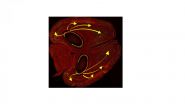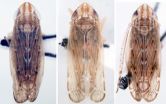(Press-News.org) Washington, DC (October 9, 2014) — Recent policy and guideline changes related to the care of patients with kidney failure have not created racial disparities, according to a study appearing in an upcoming issue of the Journal of the American Society of Nephrology (JASN). Such studies are needed to ensure that all patients continue to receive the highest quality of care after such changes are implemented.
In 2011, the End-Stage Renal Disease Prospective Payment System went into effect, which changed the way dialysis facilities were paid for care related to kidney failure. That same year, changes were also made to dosing guidelines for anemia drugs, which are often taken by patients with kidney disease.
Marc Turenne, PhD (Arbor Research Collaborative for Health) and his colleagues assessed the effects of these changes on racial disparities in the management of anemia and mineral metabolism in 7384 kidney failure patients at 132 dialysis facilities.
The researchers observed no meaningful overall differences by race regarding the rates of change of management practices or laboratory measures from August 2010 to December 2011. For example, declines in average doses of anemia drugs and average hemoglobin levels were similar for African American patients and patients of other races. Overall trends in injectable vitamin D doses and parathyroid hormone levels, which are key indicators of mineral metabolism care, were also similar for both race groups during this time.
"These early results are encouraging, and they indicate that recent policy and regulatory changes that are intended to improve the efficiency and quality of care for patients with kidney failure have not caused disparities by race in areas of care where there have historically been racial differences," said Dr. Turenne. "As policy-makers look for ways to make the delivery of health care services more affordable, it's important to ensure that patients are still receiving the highest quality of care."
Highlight
After the implementation of a new payment system for kidney failure care and changes to dosing guidelines for anemia drugs, there were no meaningful differences by race regarding changes in management practices or laboratory measures among dialysis patients.
At the end of 2009, more than 871,000 people in the United States were being treated for kidney failure.
INFORMATION:
Study co-authors include Elizabeth Cope, PhD, MPH, Shannon Porenta, MPH, Purna Mukhopadhyay, PhD, Douglas Fuller, MS, Jeffrey Pearson, MS, Claudia Dahlerus, PhD, MA, Brett Lantz, MA, Francesca Tentori, MD, MS, and Bruce Robinson, MD, MS, FACP.
Disclosures: Heather Van Doren, coordinating senior editor with Arbor Research Collaborative for Health, provided editorial services for this manuscript. The analyses upon which this publication is based were supported by award no. R01-MD006247 from the National Institute on Minority Health and Health Disparities. F.T. is supported in part by award no. K01-DK087762 from the National Institute of Diabetes and Digestive and Kidney Diseases. The content of this publication is solely the responsibility of the authors and does not necessarily represent the official views of the National Institute on Minority Health and Health Disparities, the National Institute of Diabetes and Digestive and Kidney Diseases, or the National Institutes of Health. B.R., F.T., and D.F. receive research funding from the DOPPS program, which is administered by Arbor Research Collaborative for Health and is supported by scientific research grants from Amgen, Inc., Kyowa Hakko Kirin, AbbVie Inc., Sanofi Renal, Baxter Healthcare, Vifor Fresenius Medical Care Renal Pharma Ltd., and Fresenius Medical Care, without restrictions on publications. M.T., E.C., and B.L. received previous research funding from the DOPPS program. M.T., P.M., J.P., C.D., and B.L. received previous research funding from Fresenius Medical Care.
The article, entitled "Has Dialysis Payment Reform Led to Initial Racial Disparities in Anemia and Mineral Metabolism Management?" will appear online at http://jasn.asnjournals.org/ on October 9, 2014.
The content of this article does not reflect the views or opinions of The American Society of Nephrology (ASN). Responsibility for the information and views expressed therein lies entirely with the author(s). ASN does not offer medical advice. All content in ASN publications is for informational purposes only, and is not intended to cover all possible uses, directions, precautions, drug interactions, or adverse effects. This content should not be used during a medical emergency or for the diagnosis or treatment of any medical condition. Please consult your doctor or other qualified health care provider if you have any questions about a medical condition, or before taking any drug, changing your diet or commencing or discontinuing any course of treatment. Do not ignore or delay obtaining professional medical advice because of information accessed through ASN. Call 911 or your doctor for all medical emergencies.
Founded in 1966, and with more than 14,000 members, the American Society of Nephrology (ASN) leads the fight against kidney disease by educating health professionals, sharing new knowledge, advancing research, and advocating the highest quality care for patients.
WEST LAFAYETTE, Ind. – An emerging class of electrically conductive plastics called "radical polymers" may bring low-cost, transparent solar cells, flexible and lightweight batteries and ultrathin antistatic coatings for consumer electronics and aircraft.
Researchers have established the solid-state electrical properties of one such polymer, called PTMA, which is about 10 times more electrically conductive than common semiconducting polymers.
"It's a polymer glass that conducts charge, which seems like a contradiction because glasses are usually insulators," said ...
The largest migration on the planet is the movement of small animals from the surface of the open ocean, where they feed on plants under cover of darkness, to the sunless depths where they hide from predators during the day.
University of Washington researchers have found that this regular migration helps shape our oceans. During the daylight hours below the surface the animals release ammonia, the equivalent of our urine, that turns out to play a significant role in marine chemistry, particularly in low-oxygen zones. Results are published online this week in the Proceedings ...
PHILADELPHIA - An automated early warning and response system for sepsis developed by Penn Medicine experts has resulted in a marked increase in sepsis identification and care, transfer to the ICU, and an indication of fewer deaths due to sepsis. A study assessing the tool is published online in the Journal of Hospital Medicine.
Sepsis is a potentially life-threatening complication of an infection; it can severely impair the body's organs, causing them to fail. There are as many as three million cases of severe sepsis and 750,000 resulting deaths in the United States ...
Just look into the light: not quite, but researchers at the UC Davis Center for Neuroscience and Department of Psychology have used light to erase specific memories in mice, and proved a basic theory of how different parts of the brain work together to retrieve episodic memories.
Optogenetics, pioneered by Karl Diesseroth at Stanford University, is a new technique for manipulating and studying nerve cells using light. The techniques of optogenetics are rapidly becoming the standard method for investigating brain function.
Kazumasa Tanaka, Brian Wiltgen and colleagues ...
ANN ARBOR—An unexpectedly high amount of the climate-changing gas methane, the main component of natural gas, is escaping from the Four Corners region in the U.S. Southwest, according to a new study by the University of Michigan and NASA.
The researchers mapped satellite data to uncover the nation's largest methane signal seen from space. They measured levels of the gas emitted from all sources, and found more than half a teragram per year coming from the area where Arizona, New Mexico, Colorado and Utah meet. That's about as much methane as the entire coal, oil, ...
An international research team comprised of German, Israeli and American ecologists, including Dr. Claus Holzapfel, Dept. of Biological Sciences, Rutgers University-Newark, has conducted unique long-term experiments in Israel to test predictions of climate change, and has concluded that plant communities in the Holy Land can cope with climate change of "biblical" dimensions. Their findings appear in the current issue of Nature Communications at http://www.nature.com/ncomms/2014/141006/ncomms6102/pdf/ncomms6102.pdf.
When taking global climate change into account, many ...
A team of scientists using NASA's Hubble Space Telescope has made the most detailed global map yet of the glow from a turbulent planet outside our solar system, revealing its secrets of air temperatures and water vapor.
Hubble observations show the exoplanet, called WASP-43b, is no place to call home. It is a world of extremes, where seething winds howl at the speed of sound from a 3,000-degree-Fahrenheit "day" side, hot enough to melt steel, to a pitch-black "night" side with plunging temperatures below 1,000 degrees Fahrenheit.
Astronomers have mapped the temperatures ...
Researchers at the Wyss Institute for Biologically Inspired Engineering at Harvard University have unveiled a new method to form tiny 3D metal nanoparticles in prescribed shapes and dimensions using DNA, Nature's building block, as a construction mold.
The ability to mold inorganic nanoparticles out of materials such as gold and silver in precisely designed 3D shapes is a significant breakthrough that has the potential to advance laser technology, microscopy, solar cells, electronics, environmental testing, disease detection and more.
"We built tiny foundries made ...
MADISON, Wis. – In Wisconsin, bioenergy is for the birds. Really.
In a study published today in the journal PLOS ONE, University of Wisconsin-Madison and Wisconsin Department of Natural Resources (DNR) scientists examined whether corn and perennial grassland fields in southern Wisconsin could provide both biomass for bioenergy production and bountiful bird habitat.
The research team found that where there are grasslands, there are birds. Grass-and-wildflower-dominated fields supported more than three times as many bird species as cornfields, including 10 imperiled ...
Three new species of leafhoppers from China in the genus Futasujinus were recently identified during a review of leafhoppers in museum collections in China, the UK, and Illinois. One of them, Futasujinus dietrichi, was "named after Dr. Chris Dietrich, University of Illinois, USA, in recognition of his good work on leafhoppers." The new species are described in an article in Annals of the Entomological Society of America.
The other two species are Futasujinus truncatus and Futasujinus hastatus. Both species epithets allude to processes on their aedeagal shafts.
All three ...



